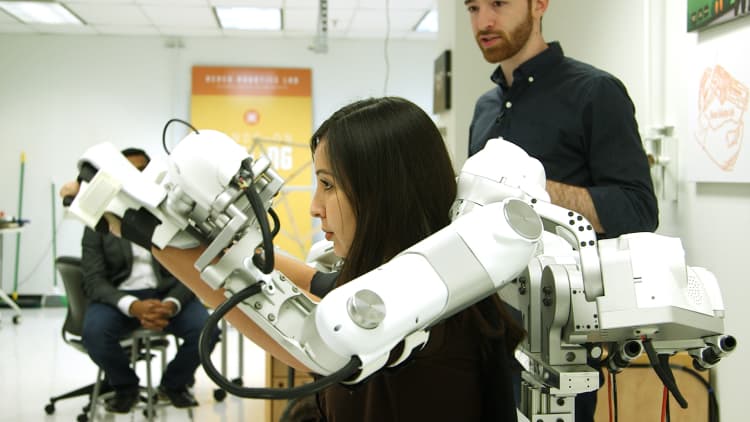
The Bureau of Labor Statistics predicts that demand for physical therapists will grow by 25 percent from 2016 to 2026.
A group of engineering students from the University of Texas at Austin hopes to alleviate some of that need with two rehabilitation robots. The first, Harmony, is a full upper-body exoskeleton designed to wrap around a patient's arms and shoulders. It's meant to move patients through a set of exercises, much like a physical therapist would.
"Given the serious need in therapy right now for stroke patients, a robotics system can play a really important role by delivering more therapy, collecting data on people and also be precise in how we deliver therapy," said Ashish Deshpande, director of the ReNeu Robotics Lab, which made the bots.
The lab has also created another exoskeleton, Maestro, to help patients regain hand and wrist function. Both robots can be programmed to take patients through specific motions.
"What I envision is a therapy facility where we have a robotics system that a therapist would program, specifically for a particular person, and then the person is able to be engaged with this robotics system for long periods of time," Deshpande said.
Maestro and Harmony are still prototypes, but ReNeu hopes they will be in patient trials by 2018. The idea is that the exoskeletons could eventually be sold under the equipment budget of large hospitals.


